TVS Jupiter First Ride - Bike Reviews
TVS has thoroughly updated the Jupiter 110 with better styling, features, safety, and performance. So, does this mean that Jupiter Jr. now has a fighting chance against the Honda Activa?

The 110-125cc scooter segment is pivotal not only in the two-wheeler market but also for the automotive sector as a whole. These scooters represent the core of personal transportation and reflect the state and health of economic growth. Launched in 2013, the TVS Jupiter has sold nearly 6.5 million units to date, establishing itself as a cornerstone of TVS’ line-up.
However, the persistent challenge for the Jupiter has always been the existence of the ever-popular Honda Activa. Now, for 2024, TVS Motors has given the Jupiter 110 a new lease of life with refreshed styling, enhanced features, improved safety, and better performance. The question, however, is if the updated Jupiter has what it takes to be the segment leader. To find out, we took it for a spin at TVS’ official test track in Hosur.
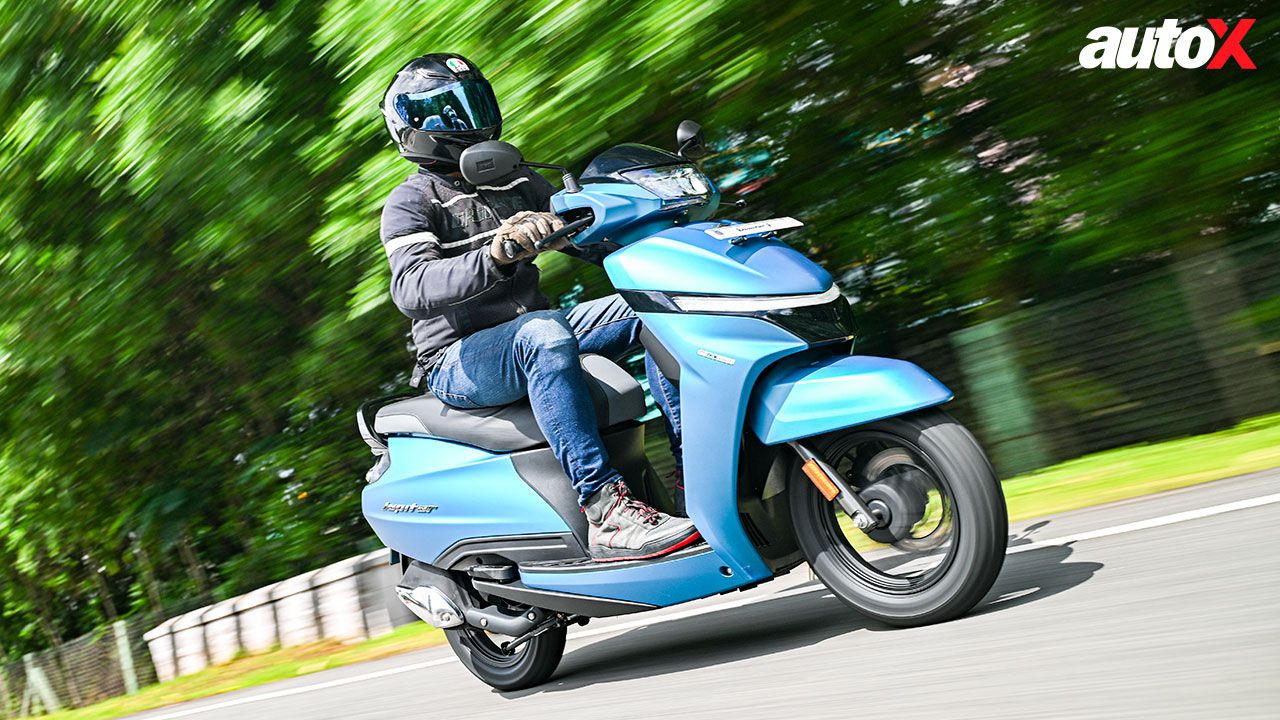
Styling & Ergonomics
In terms of styling, the new Jupiter 110 is, in my opinion, one of the cleanest and most understated designs in its segment. It has a sharp and contemporary look without being overly flashy. The visible body lines which run along the sides meet neatly at the front, while the distinct rear end complements the overall contemporary design language. For me, it now stands as one of the best-looking options in its segment.
Enhancing the refreshed styling is a sleeker LED light cluster, with a one-piece LED DRL just below it, which doubles as the indicators. Similarly, at the rear, there is an eye-catching one-piece LED taillight. That said, the new Jupiter retains the alloy wheel design and petal-style disc brakes from the outgoing model.
The ergonomics are largely unchanged from the previous model. The handlebar position and front footwell space remain the same, providing just enough room for my 5’6” frame. However, for anyone over 6’0”, it could feel a bit cramped. A notable upgrade is the premium Rexine seat cover, now available on the top-end versions.
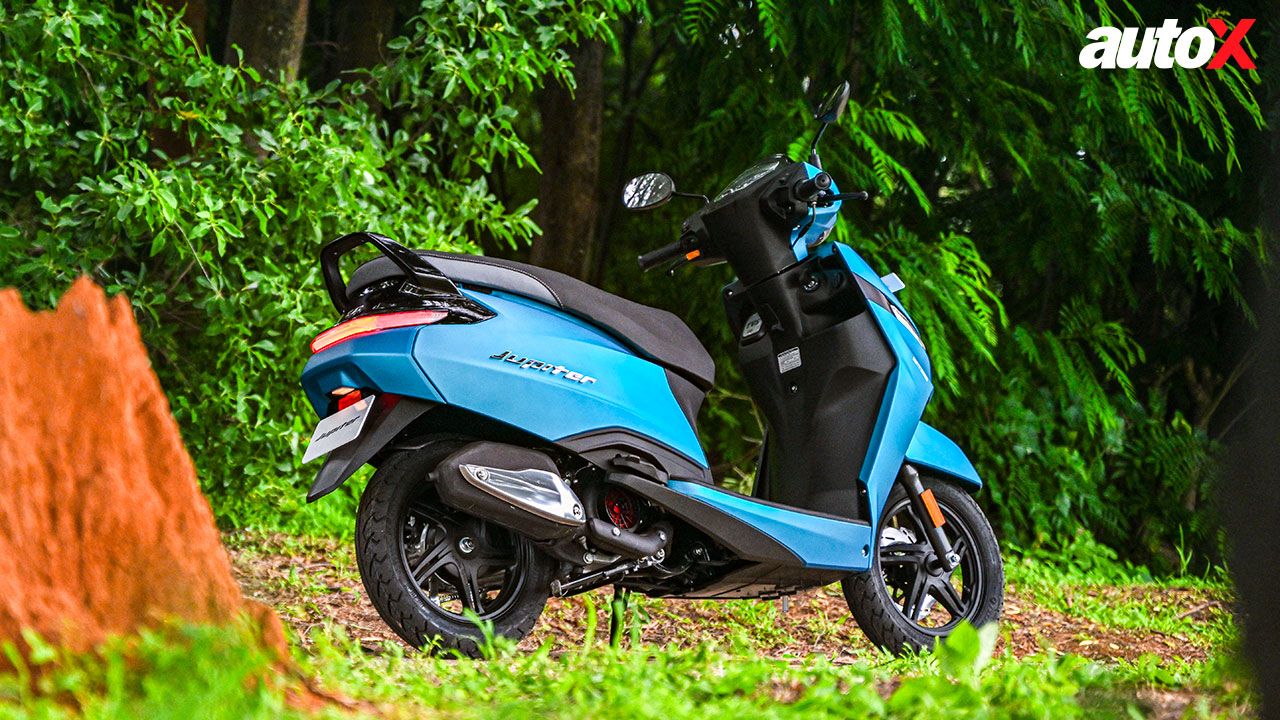
Variants, Features, & Practicality
Available in four variants, the new Jupiter 110 offers a good range of features for its price. The base Drum variant, priced at Rs 73,700 (ex-showroom), comes with an analogue instrument cluster but misses out on features like the SmartXonnect, alloy wheels, and disc brakes. Next, we have the Drum Alloy and Drum SmartXonnect variants, priced at ₹79,200 (ex-showroom) and ₹83,250 (ex-showroom), respectively.
At the top of the range is the Disc SmartXonnect variant. Its biggest highlight is an all-digital instrument cluster with a negative LCD display. The all-digital cluster, while not groundbreaking, is a definite improvement over the digital unit of the outgoing Jupiter Classic – it’s more premium to look at and is cleaner and less cluttered. That said, TVS could have pushed the envelope by offering a colour TFT display, giving it an edge over the competition. Additionally, there is also a voice-assist system and hazard lights for extra safety.
Now, practicality is crucial for a two-wheeler in this segment, and to that end, the Jupiter 110 does not disappoint. For starters, there is a sturdy luggage hook and a 2-litre storage space in the front panel. Under the seat, there is a fairly large 33-litre storage compartment, capable of fitting two half-face helmets with room for other small items. However, I wish that it were a bit deeper for a proper full-face helmet. Additionally, the USB charging port has now been relocated to make space for an externally placed fuel-filler cap, similar to what you see on the Jupiter 125.
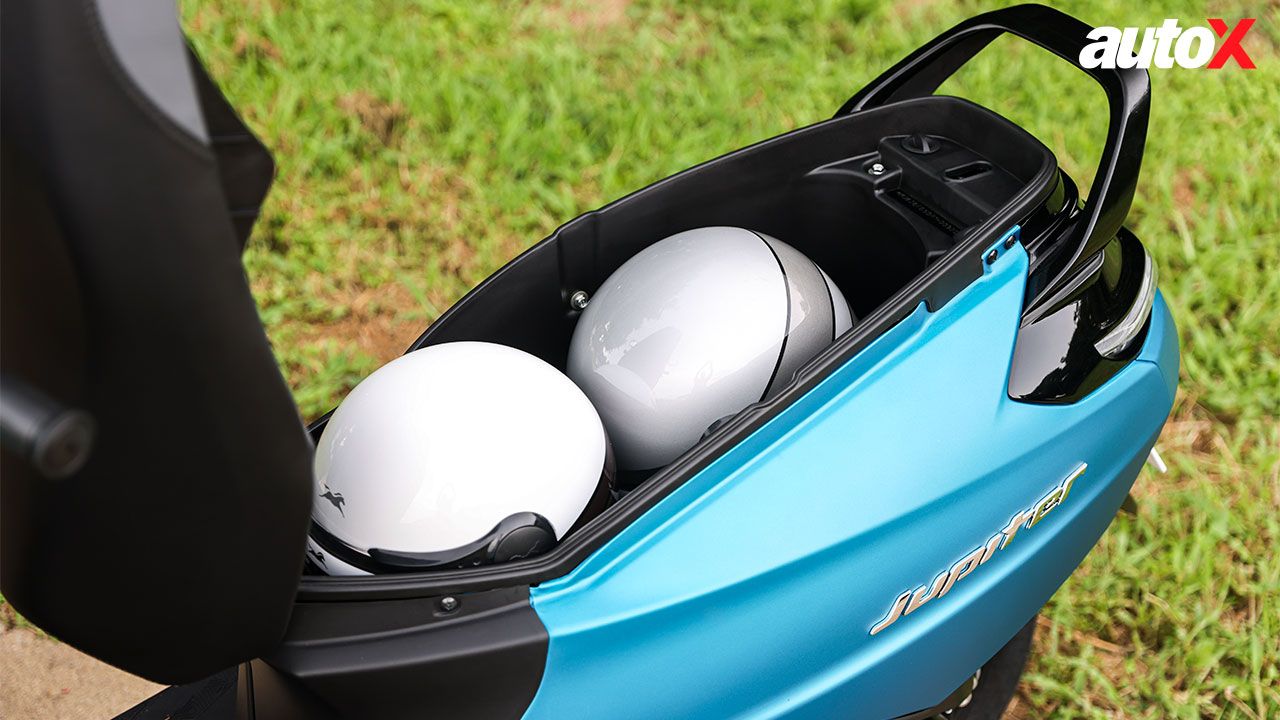
Performance & Micro-Hybrid System
The new Jupiter is powered by an updated 113cc air-cooled fuel-injected motor, producing 7.9bhp and 9.8Nm of peak torque. This engine is derived from the 125cc unit but features different internal components and a new micro-hybrid system. It’s a larger battery mated to an integrated starter generator (ISG) motor, which offers a momentary boost in performance, assists with start-ups, and supports the start-stop fuel-saving feature.
The biggest highlight of the engine is its smooth power delivery. Regardless of how aggressively you twist the throttle or how long you hold it, the new Jupiter 110 remains as calm and composed as a monk in deep meditation. Power delivery is fairly brisk as well. The scooter gets off the line without any fuss, climbs the rev range progressively, and reaches its peak performance in an equally calm manner, without any mechanical noises and unwanted judders. It’s clear that it’s a scooter that has been tuned to work effortlessly within its limit.
The performance boost from the ISG system comes in only when you pin the throttle wide open. While I couldn’t distinctly feel the electric motor kicking in, this subtle assistance from the ISG is likely a benefit for the typical rider, offering seamless assistance during everyday use. The system recovers energy during deceleration. Overall, the engine performance is commendable and is perfectly suited for real-world riding conditions you’ll find in our country.
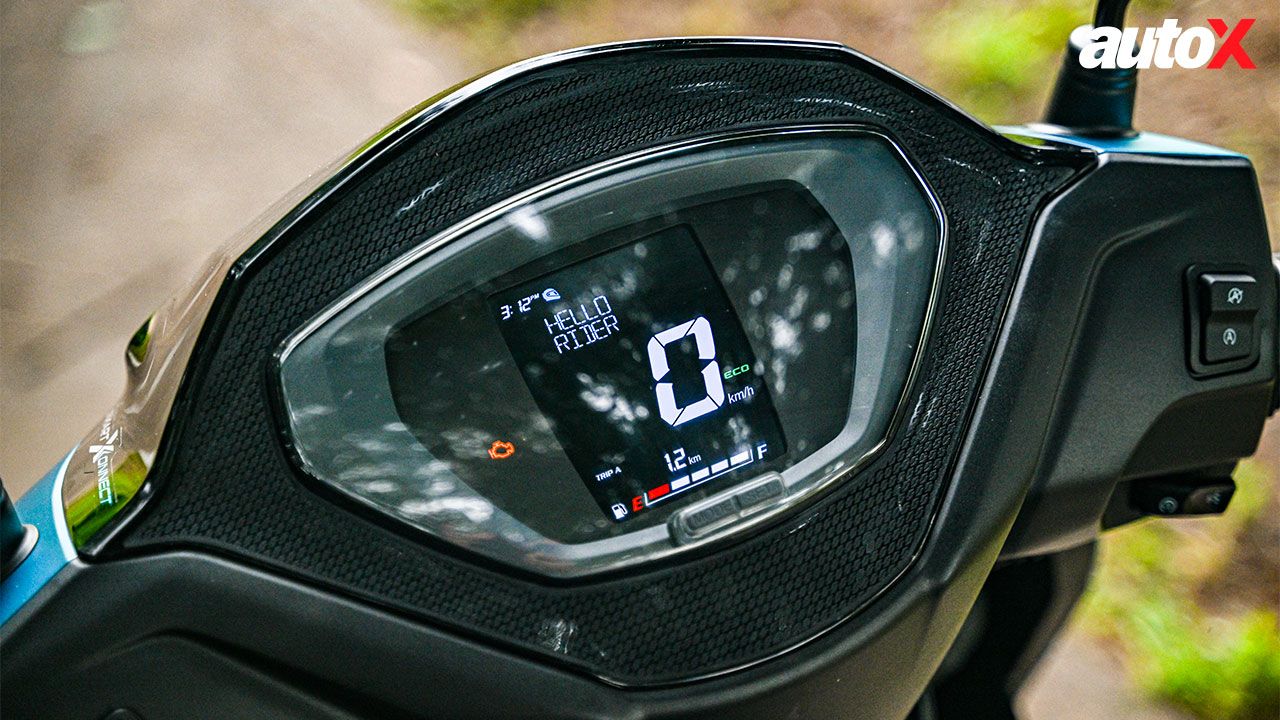
Handling, Braking & Safety
The commendable performance of the ICE and ISG motor is perfectly complemented by the handling of the Jupiter 110. The TVS test track, where we tested the scooter, comprises two long straights, a high-speed right-hander, a medium-speed left-hander, and a slow-speed U-turn, offering a variety of conditions. Weighing just 105kg, the new Jupiter 110 feels incredibly nimble. On the track, it responded promptly to all my steering inputs without any hesitation.
With a wheelbase of 1,275mm, the scooter maintains excellent stability and remains planted, regardless of the speed. It handled rough sections comfortably and glided through smoother areas with ease. Moreover, the Jupiter 110’s suspension setup is on the firmer side and doesn’t get out of shape around corners. That said, I’ll reserve further judgement until we test it on real-world roads.
The new Jupiter runs on TVS Conta tyres, which provide a reassuring grip during turns and perform reliably under heavy braking. Despite the track still being damp from overnight rain, especially towards the end of the high-speed section, the tyres performed admirably and offered solid traction. While the front brakes aren’t the sharpest, they offer a good bite. Overall, the combined braking system works effectively to bring the scooter to a quick halt. The TVS Jupiter 110 also gets a new emergency braking feature, which activates hazard lights and emits an audible beep to warn motorists behind.
Verdict
During the time we spent with the new Jupiter 110 at the TVS’ private test facility in Hosur, it didn’t put a foot wrong. However, a scooter like this warrants more extensive road time for a well-rounded verdict. That said, it’s quite striking to look at, effortless to ride, and is competitively priced. All of this makes it a desirable, worthy update to the Jupiter, which has been a favourite in the past.
----
The new Jupiter 110 has one of the cleanest and most understated designs in its segment
Engine: 113cc / air-cooled / single-cylinder
Transmission: CVT
Power: 7.9bhp
Torque: 9.8Nm
Price: ₹87,250 (Ex-Showroom, Delhi)
X-Factor: The new Jupiter is a worthy and stylish update to the outgoing model.
|
Pros |
Cons |




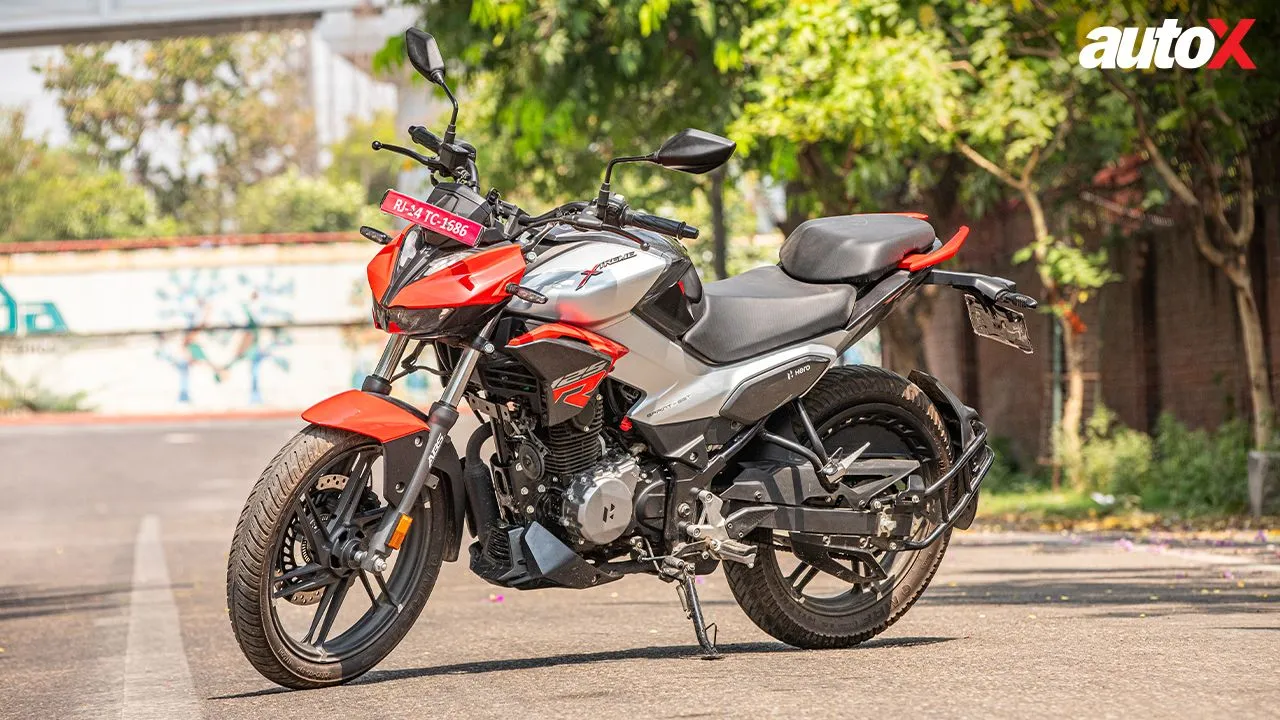
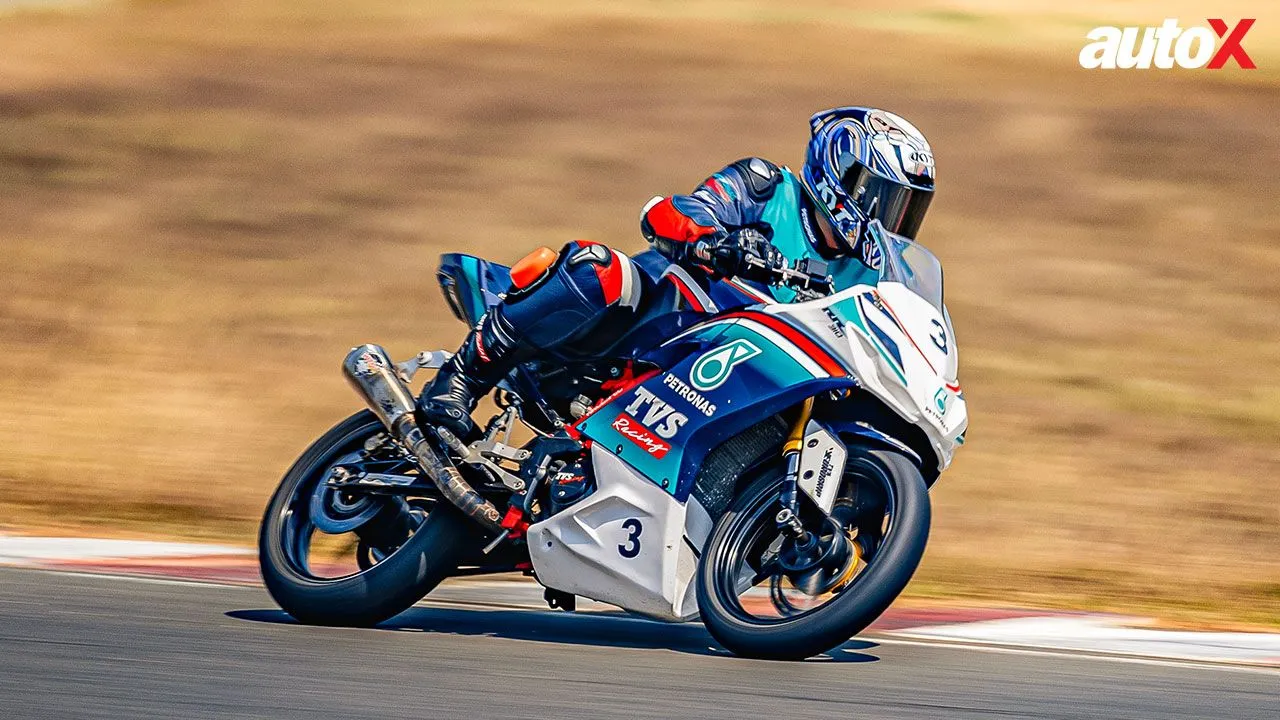
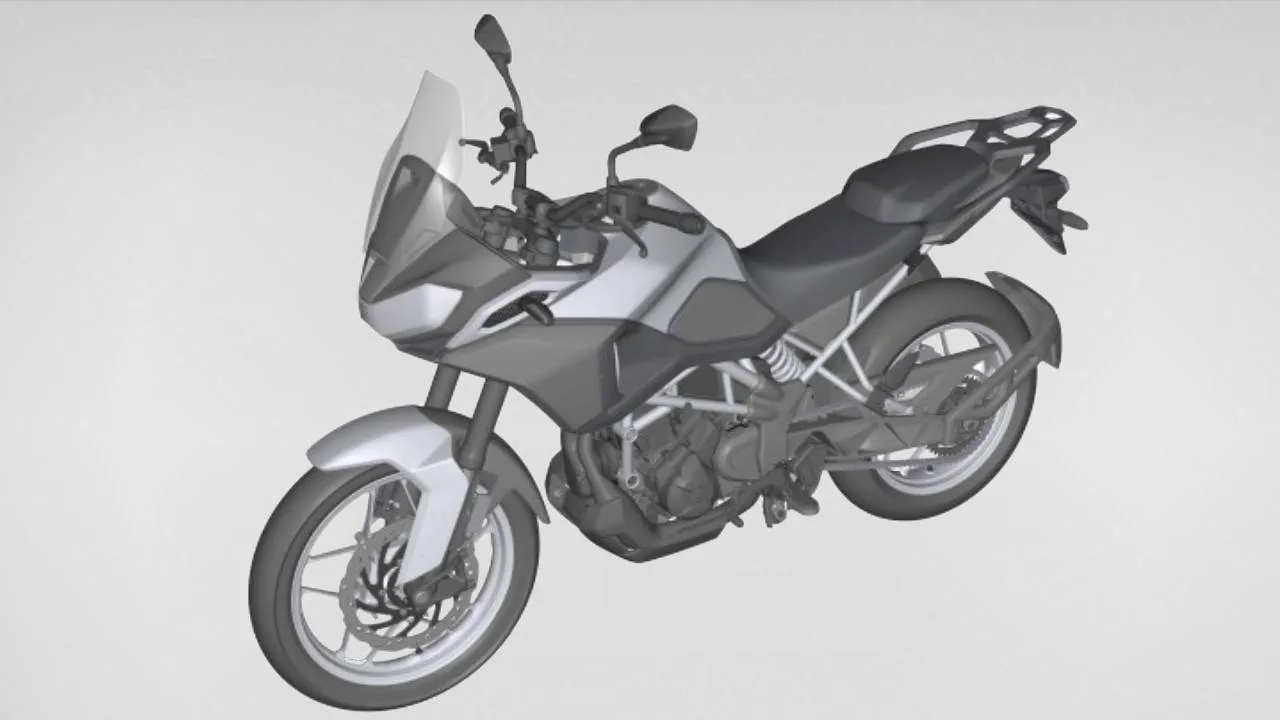
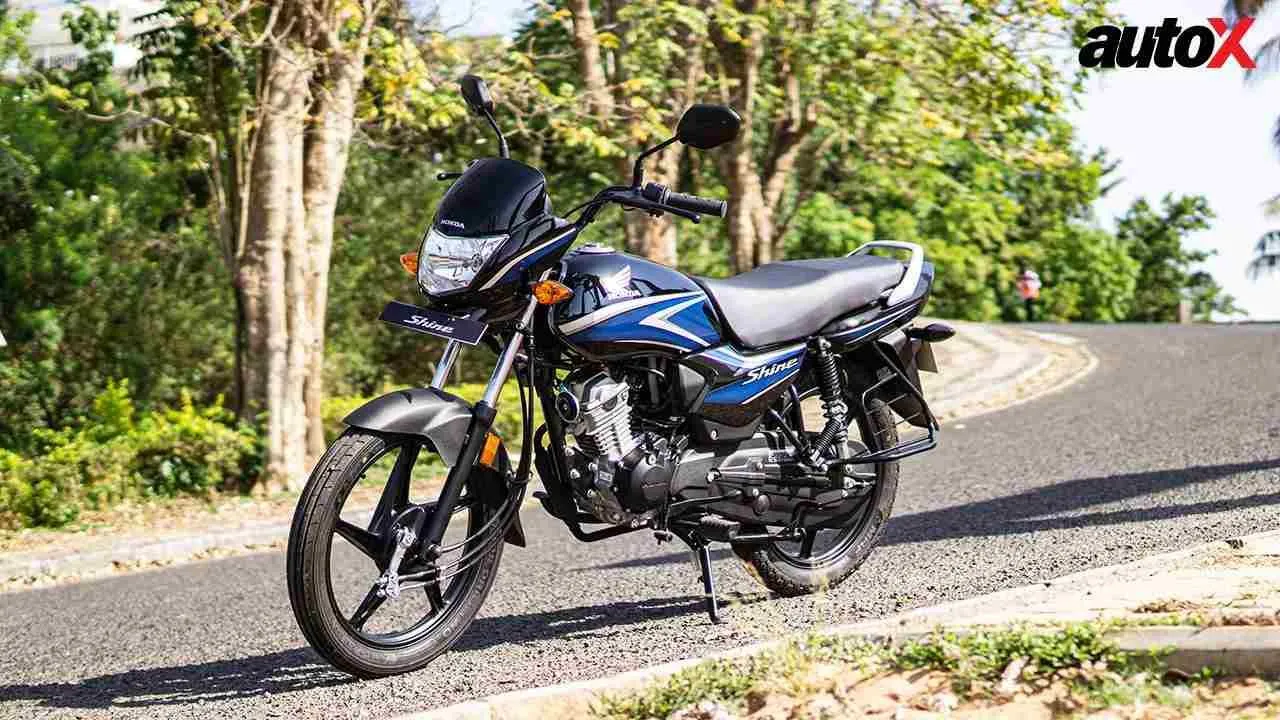
Write your Comment on